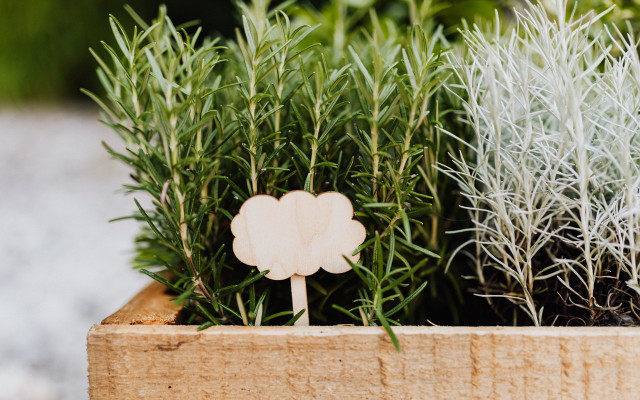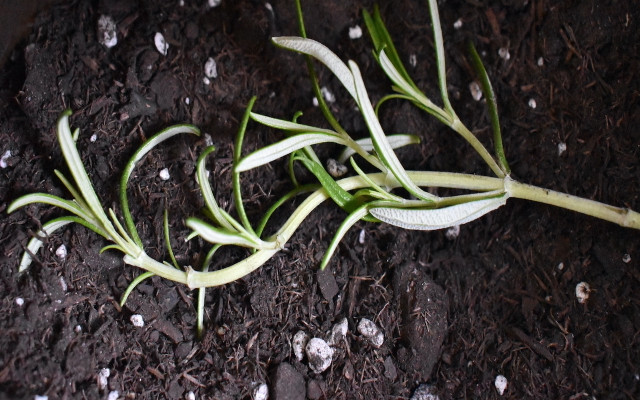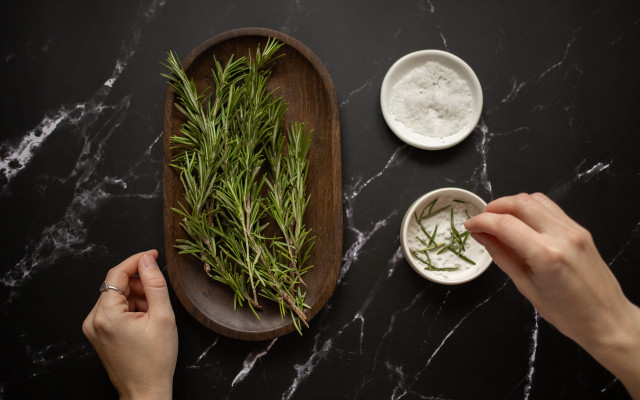The woody aroma of rosemary is a summertime favorite and the fragrant plant makes a wonderful addition to any herb garden. We’ll show you how to propagate rosemary so you can increase your yield or share it with friends.
Rosemary is a hardy evergreen shrub native to the Mediterranean, meaning it loves warm temperatures and high humidity levels. Due to its popularity in both the culinary and cosmetic industries, it is now grown around the world. In the United States, home gardeners who live in warmer areas can enjoy the beautiful flowering herb year round. For those in colder zones, you may want to plant rosemary in a container for easy overwintering.
Rosemary Health Benefits

The deliciously woody evergreen aroma of rosemary conjures up images of pine-filled forests, which could be why the scent is often used in aromatherapy candles, soaps and bath products. Not only that, but rosemary is also said to have some incredible health benefits:
- The scent has been linked to improving moods, clearing minds and relieving stress and anxiety.
- Rosemary oil may promote hair growth, help treat dandruff and protect skin cells from sun damage.
- Rich in antioxidants and anti-inflammatory compounds.
- A good source of iron, calcium, and potassium along with vitamins A, C, and B-6.
Why Propagate Rosemary?
There are many reasons one might choose to propagate rosemary, but the most common reason is that it is a difficult plant to start from seed. Rosemary seeds often have a low germination rate and can take ages to sprout and grow. Plus, they’re very particular about their soil moisture content, which can be a tricky learning curve for new gardeners.
The biggest advantage of propagating rosemary is that you are able to harvest it quicker and earlier. This is due to the fact that the plant is already much more mature at the time of planting. It’s also a great way to save a plant that might be past its prime by salvaging the healthy parts and starting over again!
How to Propagate Rosemary By Layering



The goal of the layering technique is to persuade the stem to develop roots, thereby creating new plants to harvest. For this garden propagation method, you’ll need to find a large stem that is already flopping over, and then follow these instructions:
- Create a small wound on the stem where you want the roots to grow. You can use either your nail, or gardening shears to gently nick the stem.
- Cover the nick with enough soil to keep the stem moist.
- Pin it down using small landscape staples or a small stone.
- As soon as new growth appears on the tip, cut away from the mother plant and transplant to a new location.
Using Cuttings to Propagate Rosemary



Propagating rosemary using cuttings is the most common method among hobby gardeners.
- Take a 6-8 inch cutting from a healthy mother plant using a sharp and clean pair of scissors/gardening shears.
Tip: Make sure the cutting is taken from the soft green/purple stem as opposed to the woody part (see photo above). - Remove the leaves from the bottom part of the cutting by scraping them off with your fingernail.
- Place the cuttings in water in a glass jar. Make sure none of your leaves are sitting in the water.
- Leave the glass jar on a sunny countertop, changing the water every few days until you start to see roots growing.
- Plant the rooted stalks in well-draining soil and keep an eye on the moisture levels for the first month. Once it has established, you don’t need to be as careful.
Ways to Use Rosemary



If you find yourself with a surplus of this wonderful aromatic herb after successful propagation, consider the following uses:
- Bake a savory rosemary garlic loaf
- Crush it and add it into homemade soap
- Use it in a DIY Mouthwash
- Mix some sprigs into a homemade cocktail
- Make a rosemary herbal tea
- Bake rosemary lemon shortbread cookies
- Add the leaves to homemade candles
- Dry it or freeze it for later use
- Spice up your lentil shepherd’s pie with a few sprigs
- Burn the sprigs to keep the mosquitos away
Do you like this post?







